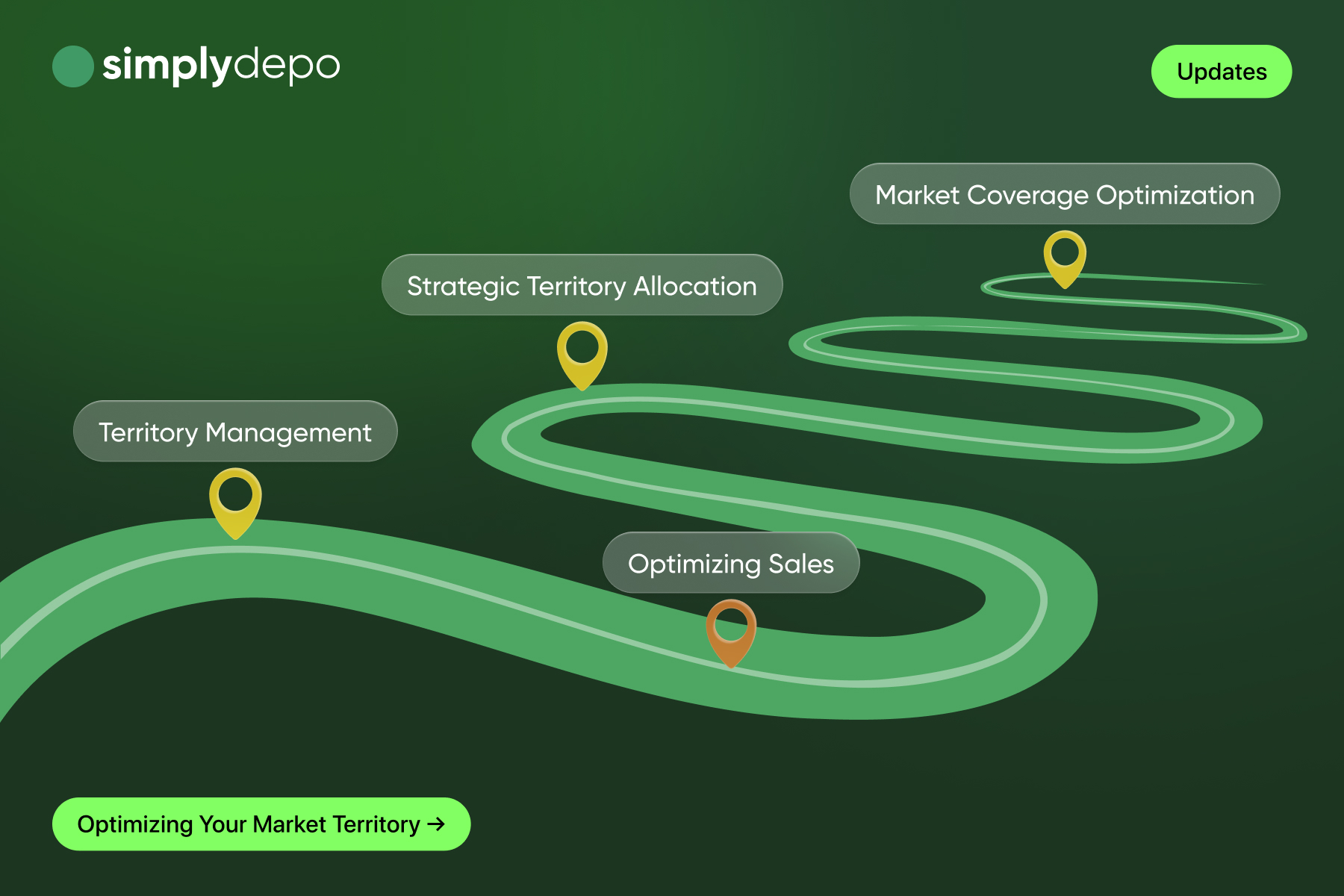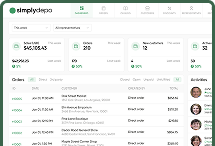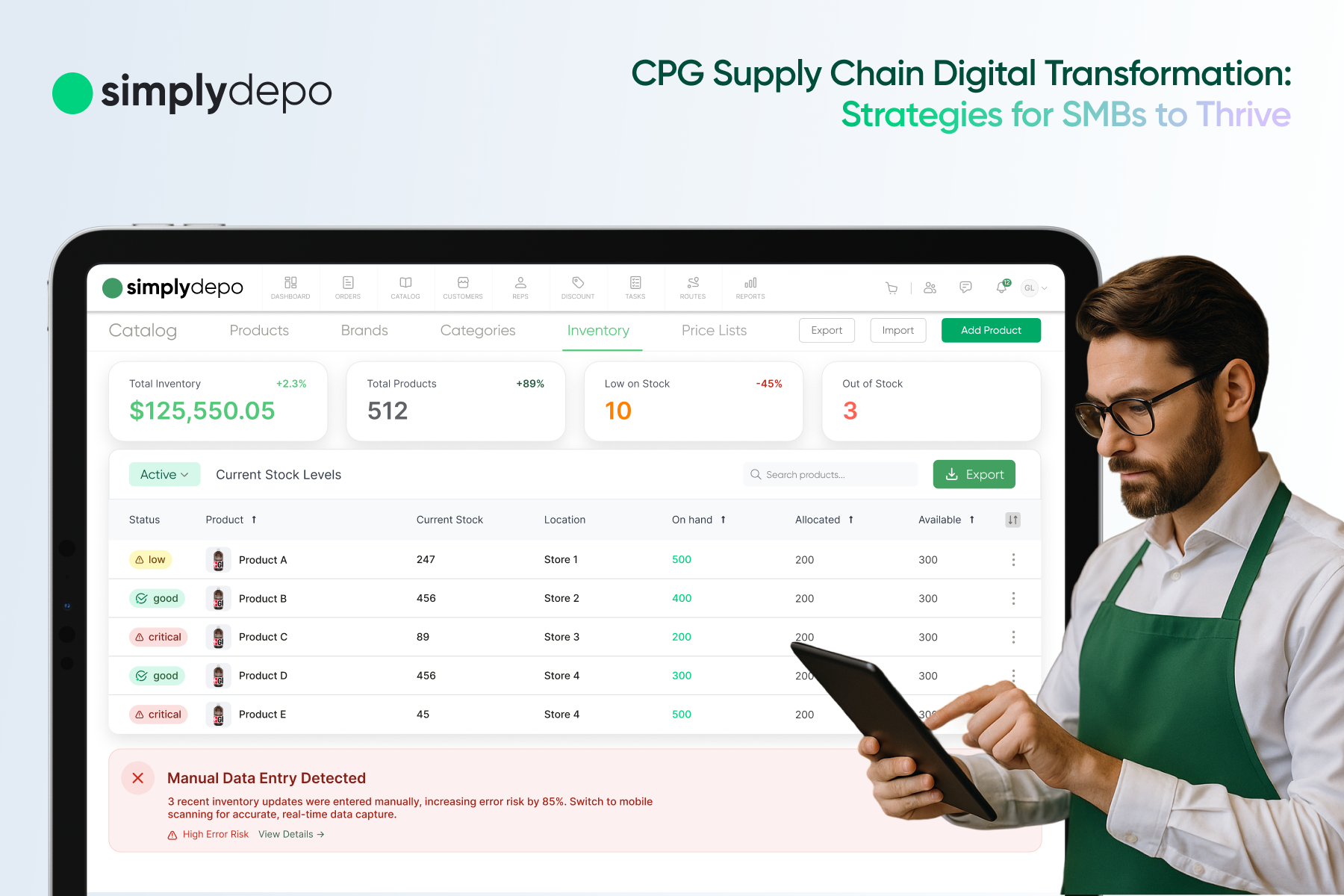For companies with growing sales teams, managing market coverage is a high-stakes balancing act. Without clearly defined territories, sales reps might overlap, leads can go untouched, and overall productivity takes a hit. For CPG and FMCG brands, distributors, and retail execution teams, territory mismanagement directly impacts revenue and brand visibility in stores.
That’s where territory management comes in. It’s the strategy behind assigning the right reps to the right areas—ensuring fair workload distribution, minimizing travel time, avoiding internal conflicts, and maximizing market coverage.
Let’s explore how to implement a smarter approach to territory management—along with tools like SimplyDepo, designed to simplify route and territory planning for field sales teams.
What Is Territory Management?
Territory management is the practice of segmenting a market into defined areas or customer groups and assigning them to field reps or teams. It’s not just about where reps go—it’s about how to structure sales operations to deliver the highest return from every visit.
Depending on company structure and go-to-market strategy, territories may be assigned based on:
- Geography: Cities, zip codes, regions, or districts.
- Customer profiles: Industry type, account value, or strategic importance.
- Sales channels: On-premise vs. off-premise, retail vs. wholesale.
- Volume or potential: High vs. low opportunity zones.
A well-managed territory strategy supports clear accountability, prevents conflict between team members, and enhances customer satisfaction. Sales reps become more focused, efficient, and able to build deeper relationships when they work consistently within familiar areas.
Territory Management vs. Route Planning
While related, territory management and route planning serve different purposes:
- Territory management defines who covers what.
- Route planning defines how to move within a given territory to maximize efficiency.
The best systems combine both—ensuring reps are assigned to the right zones and visit those customers in an optimized sequence.
Why Poor Territory Planning Leads to Sales Chaos
When territory management is neglected or poorly implemented, it often results in operational disorder. Sales teams might unknowingly compete for the same customers, visit stores too frequently—or not at all—and spend more time driving than selling.
Here are some of the most common breakdowns caused by poor planning:
- Customer confusion: When multiple reps call on the same account, messaging can be inconsistent and confusing.
- Wasted time and effort: Sales reps spend unnecessary hours on the road, or worse—make unproductive visits.
- Coverage gaps: Promising areas may be left out altogether, especially if assignments are based solely on geography, without factoring in demand or account value.
- Internal conflict: Overlapping responsibilities lead to turf wars, missed targets, and low morale.
- Inefficient retail execution: In CPG and FMCG, field teams must manage merchandising, planograms, stock audits, and promotions. Without clarity on who owns what, execution becomes inconsistent.
Ultimately, poor territory planning creates a domino effect—impacting customer experience, rep performance, and bottom-line revenue.
Key Principles of Smart Territory Management
Effective territory management requires more than drawing boundaries—it requires data-driven planning and flexibility. The following principles help ensure that territory assignments are strategic, scalable, and performance-oriented.
Customer Segmentation
Start with understanding who the customers are and what differentiates them. Segment by:
- Purchase frequency
- Account size or spend
- Store type (independent vs. chain)
- Service needs or complexity
This helps tailor coverage based on the potential value of each customer group.
Data-Based Boundaries
Define territories using real data. Go beyond maps and zip codes—analyze:
- Sales history
- Customer density
- Visit frequency
- Rep coverage patterns
- Travel time and proximity
This ensures territories are balanced, realistic, and aligned with actual market dynamics.
Balanced Workload
Each rep should have a manageable number of clients and a realistic travel schedule. This promotes better service and reduces burnout. Use KPIs like:
- Number of accounts per rep
- Average distance traveled per day
- Time spent with customers vs. in transit
Performance Monitoring
Field execution should be continuously tracked. Use territory-level reporting to understand:
- Sales volume by territory
- Coverage gaps
- Time-on-site vs. en-route
- Visit compliance rates
When performance dips, data allows managers to quickly identify the cause and adjust strategy.
Step-by-Step: How to Divide Territories Without Overlap
Here’s a structured approach for building efficient and conflict-free territories:
1. Analyze the Market
Start with historical data—sales records, CRM information, customer locations, and even competitor footprints. Overlay this with store types and foot traffic data to identify where opportunities lie.
2. Segment the Customer Base
Group customers by their needs and value. A high-volume retailer with weekly deliveries may require more rep attention than a low-volume convenience store.
3. Map Territories Logically
Use digital maps to visualize where customers are located. Avoid arbitrary divisions—build territories that minimize driving and align with major roads, distribution centers, and rep residences.
4. Assign Reps Strategically
Select reps for each territory based on experience, proximity, and customer relationships. Assign key accounts to reps with relevant expertise or familiarity.
5. Review and Adjust Quarterly
Territories should not be static. Seasonal trends, store openings/closings, and shifting team capacity all warrant regular reviews. Schedule formal territory evaluations at least every quarter.
Tools That Help: Automating Territory and Route Management
Manual planning through spreadsheets or paper maps can’t keep up with modern sales operations. That’s where technology comes in.
SimplyDepo offers a comprehensive Route Management Software that supports both territory planning and field execution. Built for sales and merchandising teams, it enables:
- Automated client assignment based on location and rep availability
- Route optimization to reduce drive time and fuel costs
- Real-time visit tracking and performance analytics
- Visualization of coverage areas and reps’ daily activities
Why It Works for Field Teams
Companies managing hundreds of stores across multiple territories face constant pressure to hit retail execution KPIs. SimplyDepo helps operational leads ensure:
- No client is missed or visited too frequently
- Sales reps follow efficient, logical routes
- Managers have visibility into territory performance
- Market adjustments are made quickly and confidently
By automating territory mapping, SimplyDepo minimizes guesswork and supports data-driven decisions.
Common Mistakes to Avoid
Avoid these pitfalls when building or adjusting sales territories:
- Basing territories only on zip codes
Zip codes may split neighborhoods or store clusters, leading to inefficient travel. - Ignoring drive time and traffic
A territory that looks balanced on a map may be unmanageable in real life due to congestion or poor access. - Overlooking historical performance
Reassigning a territory without understanding past sales and visit frequency can disrupt customer relationships. - Failing to adjust regularly
Teams, products, and markets evolve. Territory plans must evolve too. - Lack of technology adoption
Without software support, even the best strategy becomes hard to execute at scale.
Set the Field Team Up for Success
Strong territory management is essential for maximizing sales coverage, minimizing internal friction, and achieving operational excellence. It requires a combination of data analysis, customer understanding, field insight, and the right tools.
As markets become more competitive and teams more distributed, relying on manual methods is no longer sustainable. Tools like SimplyDepo provide an end-to-end solution for field execution—from defining territories to optimizing routes and tracking performance in real time.
For sales managers, CPG brands, and distributors, it’s time to reimagine how territories are built and managed.
Explore how SimplyDepo helps automate territory management and unlock better sales outcomes.📍 See Route Management in Action
Boost Sales.
Cut Manual Work.
Streamline ordering, routing, and retail execution — while giving every rep the tools to grow accounts faster.
-
+15h
Save weekly
per rep -
93%
Increase
buyer retention -
24%
Increase
in retail sales

Error: Contact form not found.













